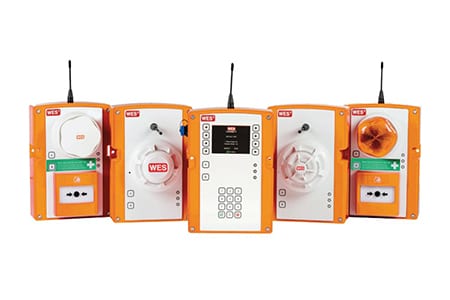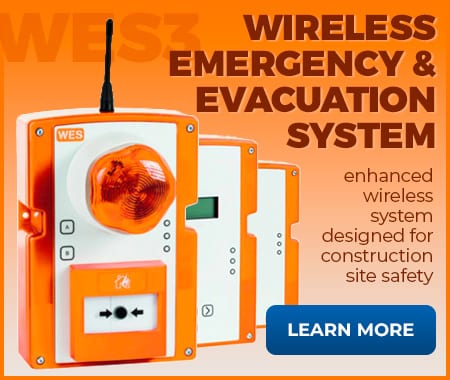 Property and business owners are usually aware that protecting their buildings, and any employees or visitors they may have, from fire and smoke is of utmost importance. The first way to do that is to install an evacuation system, which is fairly straightforward on a finished building that’s outfitted with utilities.
Property and business owners are usually aware that protecting their buildings, and any employees or visitors they may have, from fire and smoke is of utmost importance. The first way to do that is to install an evacuation system, which is fairly straightforward on a finished building that’s outfitted with utilities.
But, how do you protect outdoor property, areas not covered by a hardwired system, temporary locations, or unfinished buildings?
Below, we’re going to go over the top five benefits of a wireless emergency and evacuation system so you can decide if this is the proper solution for protecting your space.
What is a Wireless Emergency and Evacuation System, and How Does it Work?
A wireless emergency and evacuation system doesn’t require electric, internet, or phone lines to function. So, they’re capable of alerting any occupants as well as emergency response teams to a problem. They run on long-lasting batteries and use a cell signal to communicate the presence of a fire. Depending on the size of your space, there may also be multiple units that communicate with each other via cell signal.
The Benefits
Now that you have a general idea of how these systems work, let’s dive into the top 5 benefits of setting up a wireless emergency and evacuation system in your space.
1) Wireless
By far, the biggest benefit is that these systems are wireless. They don’t require a source of electricity, internet, or a phone line, so they’re perfect for unfinished buildings or temporary locations like emergency medical stations, mobile workspaces, unfinished buildings, and even outdoor areas.
2) Strobe and Sound Alarms
Your wireless system will use a cellular signal to alert you and emergency response teams to the fire, smoke, or heat detected. But, they also use strong strobe lights and alarms to notify everyone in the vicinity that there is an emergency. This will help your team or any visitors evacuate as quickly as possible and without injury.
 3) Quick Set-Up
3) Quick Set-Up
Because these systems don’t need to be hard-wired or connected to a phone line, they set up in minutes and can be used immediately.
4) Easily Locate Source of Fire
A wireless emergency and evacuation system needs to be set up with multiple modules for proper reporting and sensing, and each location reports data separately. This gives you an exact location of where the issue was detected so that you and the emergency response teams can correct the problem quickly and efficiently.
5) Built for Outdoor Jobs
Lastly, all modules in a wireless system are built to endure the elements and function outdoors. This means that you won’t need to worry about your system getting wet or being in unprotected areas.
The benefits of a wireless emergency and evacuation system are clear, and installing one can lead to a faster emergency team response time and a safer workplace. If you want to learn more, contact one of our highly trained fire safety professionals to discuss how a wireless system can benefit you and your business.





